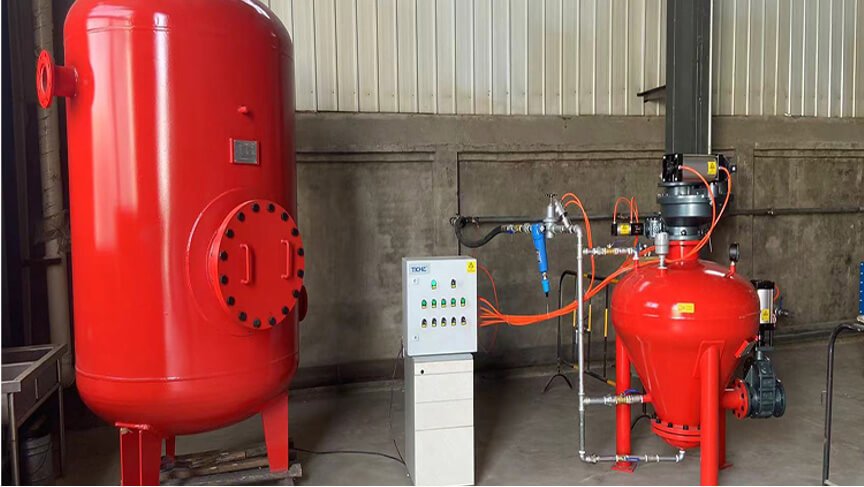Product
water storage tank
In pneumatic conveying systems, water storage tanks are mainly used to store and supply liquid media required for the conveying process (such as condensed water of compressed air, clean water, etc.), as well as to handle moisture or dust generated during the conveying process. The design and performance of the water storage tank are directly related to the stability and efficiency of the system. It is not only an important part of the pneumatic conveying system, but also plays a role in regulating pressure, stabilizing flow, and protecting equipment.
Principle

The main functions of water storage tanks in pneumatic conveying systems include: Buffering effect: By storing a certain amount of liquid, the water storage tank can provide a stable supply of liquid when demand fluctuates, avoiding pressure fluctuations caused by instantaneous demand changes.
Condensate water collection: During the pneumatic conveying process, the moisture in the compressed air will condense in the pipeline to form condensate water. The water storage tank can collect this condensate water to prevent it from affecting the conveying effect.
Dust removal and purification: For gases containing dust or impurities, the water storage tank can be initially purified by water washing or spraying to reduce wear and pollution on subsequent equipment.
Pressure regulation: Water storage tanks can help maintain constant pressure within the system to ensure smooth operation of the pneumatic conveying process. Parameter
Capacity range: 500 liters to 10,000 liters
Material: stainless steel (SS304/SS316) glass fiber reinforced plastic (FRP) polyethylene (PE) carbon steel (anti-corrosion treatment required)
Working pressure: normal pressure to 1.0 MPa
Temperature range: -20°C to +80°C (special requirements can be customized)
Liquid level control: manual/automatic liquid level control system
Interface size: DN50 to DN200
Connection method: flange connection/threaded connection
Safety accessories: liquid level gauge, pressure gauge, pressure relief valve, overflow port
Additional functions: internal coating (anti-corrosion), insulation layer (anti-freeze/heat preservation), automatic drainage system, remote monitoring and alarm system Features and Advantages
Strong corrosion resistance: Made of stainless steel or other corrosion-resistant materials, it is suitable for storing acid and alkali chemicals or liquids containing corrosive components to extend its service life.
Efficient and energy-saving: Optimize design, reduce energy consumption, and improve the overall efficiency of the system.
Intelligent monitoring: Equipped with intelligent monitoring equipment such as liquid level sensors and pressure sensors to monitor the status of the water storage tank in real time to ensure the stable operation of the system.
Safe and reliable: It is equipped with safety devices such as overflow ports and pressure relief valves to prevent overpressure or leakage and ensure safe operation.
Easy maintenance: Simple structure, easy to clean and maintain, reducing downtime and maintenance costs.
Environmentally friendly: It complies with national and local environmental protection standards and uses non-toxic and harmless materials to ensure water quality safety. Usage Scenarios
Water storage tanks are widely used in pneumatic conveying systems. Specific usage scenarios include:Chemical industry: used to store and handle condensed water or dusty gas generated during pneumatic conveying to ensure the safety and stability of the conveying process.
Food processing: used to store clean water to ensure the hygiene and safety of conveyed materials and comply with food safety standards.
Pharmaceutical industry: used to store high-purity water or solvents to ensure that materials during transportation are not contaminated and comply with GMP (Good Manufacturing Practice) requirements.
Steel plant: used to store and process moisture generated during fly ash transportation to reduce environmental pollution and improve production efficiency.
Sewage treatment plant: used to store wastewater generated during sludge transportation and conduct preliminary purification treatment to reduce the impact on the environment. 